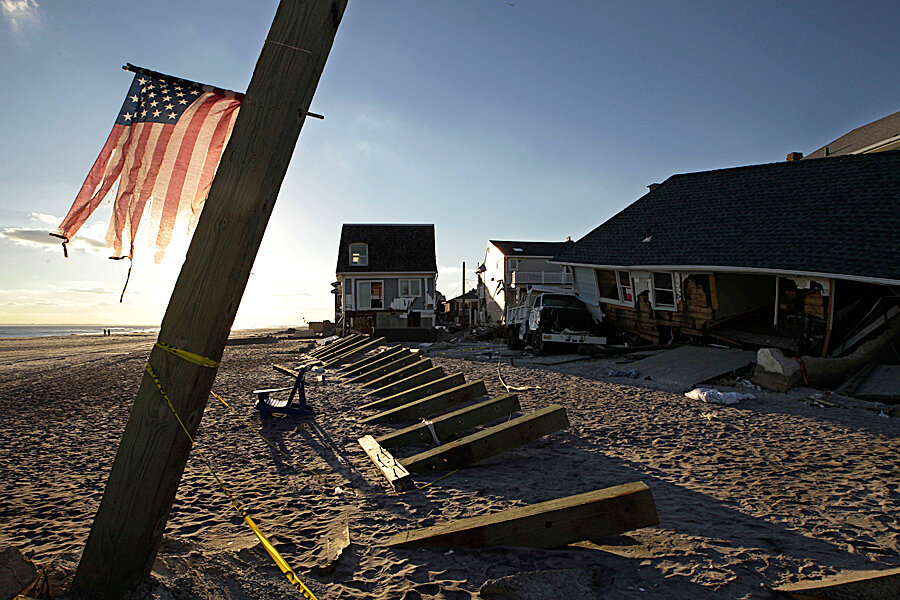Superstorm Sandy, which came ashore in southern New Jersey Oct. 29, was the worst US weather disaster since hurricane Katrina in 2005. A wall of water 14 feet high flooded subways in New York, ravaged boardwalk areas in the region, and knocked out the electricity for millions of people. Tens of thousands of people started the winter sharing homes with relatives or friends.
The storm spurred discussions about ways to protect the area in the future, such as building dikelike structures outside New York Harbor and requiring homeowners to elevate their homes when they rebuild. New York City hired private companies to provide plumbers, carpenters, and electricians to help homeowners get back on their feet more quickly – a possible template for other cities hit by such disasters in the future.
New York, New Jersey, and Connecticut asked the US government in late November for $82 billion to help pay for the damage and for mitigation efforts to prevent future floods. Congress seems prepared to give them about 75 percent of that amount.
– Ron Scherer
Reporter's takeaway: “In the Rockaways in New York, I came across Virginia Fernandez, who was using a broom to try to sweep the sand off what used to be grass in her front yard. It was an effort to restore order amid chaos – a scene repeated by many homeowners who cleaned windows and raked lawns even while their homes were barely habitable.”






